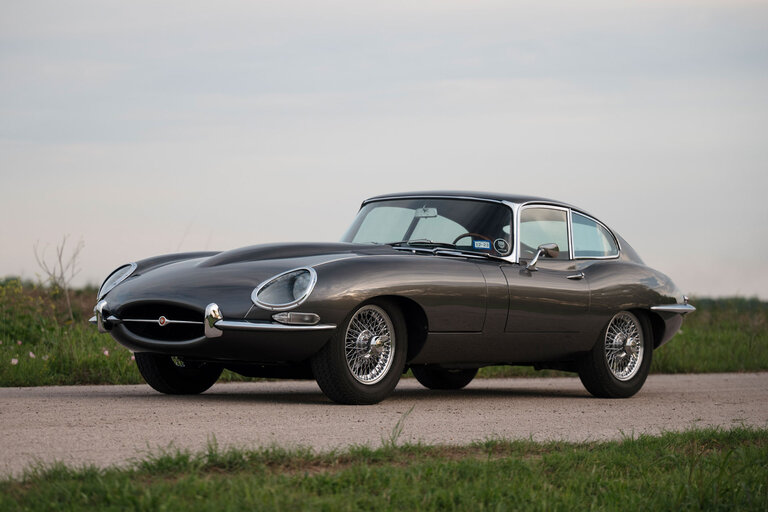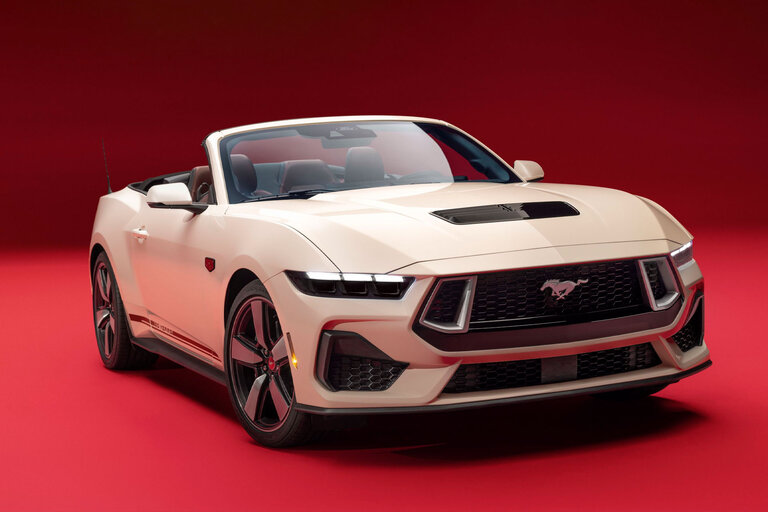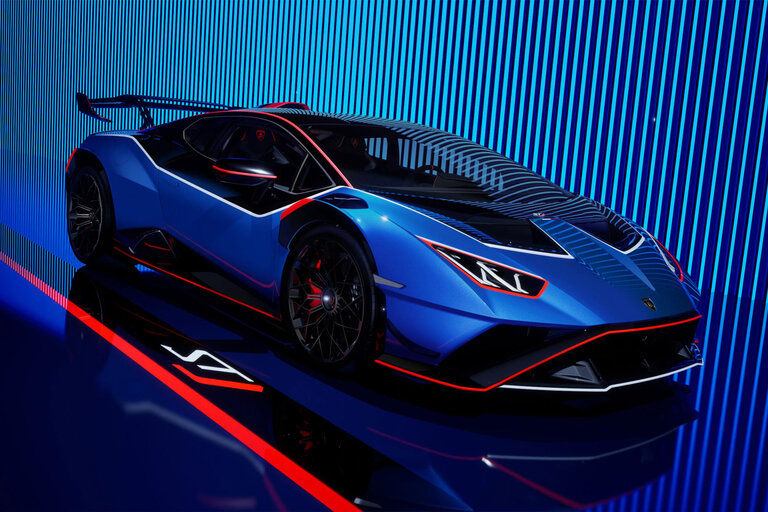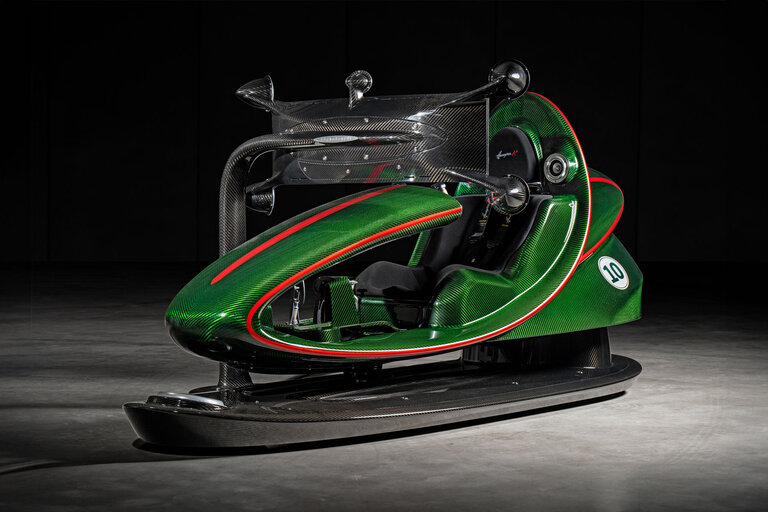
From the January 2006 issue of Car and Driver
An intriguing element of BMW’s presentation for the new M5 emphasized this supersedan’s all-around usefulness, suggesting it’s as well suited for a run to the supermarket as it is for a BMW-club track day. We have trouble digesting this characterization, for a couple of reasons.
First, one look at the pricing tells you these cars aren’t grocery getters. Not unless great-uncle Ned’s recent bequest included the deed to Atlanta and your designated grocery getter needs to travel at warp speed. We can imagine an M5 doing commuting duty, but we suspect the guys who acquire cars in this price realm are a long way from nine-to-five gigs.
And for About 40 Grand Less . . .
You know what they say: 10 grand here, 10 grand there, pretty soon you’re talking real money. So when a Dodge Charger SRT8—base price, $38,095—showed up at Hogback Road just as the Bahn Burners were heading to Grattan, we thought it would be interesting to see how this relatively low-priced missile would measure up against the high-priced execu-rockets.
The answer: very well, indeed. Better, in fact, than we expected.
Propelled by a DaimlerChrysler 6.1-liter Hemi V-8—425 horsepower, 420 pound-feet of torque—the 4274-pound Charger rumbled to 60 mph in 4.8 seconds, covered the quarter-mile in 13.2 seconds (a tie with the Cadillac) at 109 mph, pulled 0.90 g on the skidpad, and stopped from 70 mph in 168 feet.
The basic test numbers were impressive, but the Charger’s agility on the Grattan road circuit was truly revelatory. Even though we experienced brake-fade problems during the full-tilt process, we were able to herd the bad-boy Dodge around the track in 1:32.65, just 0.1 second behind the CLS55 Benz and almost a full second quicker than the Cadillac STS-V .
That’s a tribute to excellent work by DC’s Street and Racing Technology skunkworks guys, as well as a testimonial to a superb job by the chassis engineers.
So the Charger isn’t in the luxury ballpark with these other cars, but the Hemi does make it go, and it sounds good while doing so. And what could you buy with all that leftover dough? How about a Honda S2000? Or, thinking of maybe improving your home life, a new kitchen?
Reason No. 2: Check the specs. Check the performance data. Call us crazy, but we think 400 horsepower—the minimum on tap in this trio of fantastic four-doors—is a little over the top for a run to the A&P. And would you really want to park one of these thoroughbreds in range of some harassed parental unit herding a 10-year-old Suburban filled with screaming soccer-game celebrants? Sure, and while we’re at it, we’ll let the kids use the car as a target for kicking practice.
Like any passenger cars, particularly those with four doors, the members of this trio have to function comfortably in an everyday environment, which they do. But their basic mission is to perform to a far higher standard, serving up hedonism and haste in super-sized portions. The hedonism part is easy, obtainable almost anywhere. But the level of high-speed competence required to play in this game is exceptional, and it’s the cars conceived for and developed on Germany’s autobahns that acquire the unique combination of right-now response and athletic feel that’s still pretty much exclusive to the Teutons.
This hasn’t discouraged non-Germans from trying to gain membership in the Bahn Burner Club, most recently Cadillac. In fact, it’s Cadillac’s latest bid for recognition in this elite club—the V-series version of the new STS sedan—that brings us together. What better qualifications review than a three-way test involving the cream of the autobahn crop? Right. We can’t think of one, either.
You may observe that the Caddy faces only two German opponents in this showdown and then wonder why there’s no Audi in the field. Here’s why: The RS 6 that starred in our May 2003 supersedan shootout (“Knockout Sedans: The Heavyweights“) is out of production, and we won’t see the new version until 2007. We did consider a couple other non-Germans—the handsome Maserati Quattroporte and Jaguar’s XJR — but neither is in the power ballpark with this threesome. In any case, the two Germans are formidable: the Mercedes CLS55 AMG, with its potent E55 powertrain, and the latest BMW M5, generation four in a line that dates to 1984.
We’ve accumulated formal instrumented data on the CLS55 before (C/D, October 2005), but the two others are virgins insofar as our Racelogic VBOX test gear is concerned.
The Caddy and the Bimmer didn’t become available until late in this issue’s production cycle. In fact, getting the M5 into the battle required an all-night blitz back from the car’s North American introduction at Lime Rock Park in northwestern Connecticut. It joined the two other combatants the next morning at Grattan Raceway Park near Grand Rapids, Michigan. Given the time constraints, the long day at Grattan—one of the more challenging road circuits in our part of the world—was the core of our evaluation. We included some Michigan back roads and some freeway cruising. But the basic mission here is performance, and for that the controlled environment of a test track was ideal.
So, here they are: three supersedans, two of them sons of the autobahn, one a wannabe, all distinctly different, but all with well over 450 horsepower available on demand. How would it play out? We strapped on helmets, tied down the test gear, and set out to get some answers.
Third Place: Mercedes-Benz CLS55 AMG
If a thing of beauty is truly a joy forever, then CLS owners are going to enjoy their rides for a long time, because this is flat out the sexiest sedan in the business. And it’s even sexier in black, wearing nothing but those subdued little AMG badges. The curvaceous contours and character lines look good in any color, but black lends a deliciously sinister element, like Angelina Jolie in a slinky little number with spaghetti straps and three-inch spike heels. You know something naughty is gonna go down any minute, and you’re gonna love it.
The CLS could get by on looks alone, but there’s obviously more to it than that. There’s power, for example. The key distinguishing element between the CLS500 and CLS55 AMG is under the hood, wherein resides a supercharged and intercooled 5.4-liter SOHC 24-valve V-8. We’ve seen this engine in AMG powerhouses before, notably the E55, and like other boosted Benz engines, it’s a leering torque monster. Horsepower—469 at 6100 rpm—ain’t exactly peanuts, but 516 pound-feet of torque is enough to affect the rotation of the earth. Peak torque comes on at 2650 rpm, and there’s enough of it to cover for the relative shortage of forward cogs in the five-speed automatic transmission and also to get the CLS out of the starting blocks in a serious hurry: 0 to 60 mph in 4.2 seconds, 0 to 100 in 9.8, the quarter-mile in 12.6 at 114 mph. That’s Corvette turf, and pretty brisk for a two-ton car.
HIGHS: Drop-dead good looks, torque-monster V-8, sumptuous interior.
LOWS: Restrictive rear sightlines, reluctant transient response, limited rear-seat room, think-twice price.
Brisk also applies to the braking performance. Like the Bimmer, the CLS55 has manhole-cover-size rotors at all four corners, vented and cross-drilled, good for stops from 70 mph to motionless in just 161 feet. That’s not quite as good as the M5, but it’s nine feet better than the Corvette roadster we tested last March ( C/D, “It’s-All-About-Me Roadsters“). We got an overheated-brakes message displayed on the dash during hot lapping at Grattan, but it didn’t come with any loss of braking power.
This Benz is as seductive inside as out, with an elegant dashboard layout set off by a broad swath of dark burled walnut and seats that are the equal of the Bimmer’s—supportive, comfortable, and widely adjustable. They also include a massage function—just the thing for avoiding numb butt as the miles roll by.
All in all, this Benz is a superb high-roller package, prodigious power and undeniable prestige wrapped in seductive sheetmetal that’ll turn heads for years. So what’s it doing in third place?
Just this: For all its thrust and high-speed stability, the Benz isn’t really happy doing hot laps on a technical circuit like Grattan. There were logbook demerits for relatively lethargic responses in quick transitions, for steering that added effort as speed increased without any corresponding increase in feel, for a manumatic transmission function that took its sweet time making downshifts, and for a brake-assist program that made smooth braking tricky to achieve.
Grip—0.93 on the skidpad—was abundant, inspiring confidence in high-speed corners, and switching off the electronic stability program (ESP) allowed a bit of drift to get the rear end on the same directional page as the front. But the system never goes completely off-line, and when the ABS is triggered, ESP automatically goes back to work.
Pointed straight, the Benz squirted down the track like something operating on solid-fuel propellant, providing a lovely rush down Grattan’s 3200-foot front straightaway. Even so, the Bimmer was more than a second quicker around this tricky 2.0-mile layout.
On the ergonomic front, the Benz’s swoopy hoodline made for best-in-test forward sightlines, but the high beltline and the steep angle of the rear glass impinged on vision in the rear-quarters and the inside rearview mirror. The roofline also limits rear headroom for passengers more than six feet tall, and there’s no center seat back there, which hurt the Benz in the scoring.
And let’s not forget the issue of money. With an as-tested price of $92,975, the CLS had the heaviest window sticker in an expensive trio, which hurt the value quotient.
THE VERDICT: A dazzling blend of beauty and beast.
However, for those who aren’t inclined to worry about an extra 10 grand here and there, and who don’t care about paring a second or two off their lap times at Mercedes-club track days, this Benz may well be more appealing than its BMW rival.
2006 Mercedes-Benz CLS55 AMG
469-hp V-8, 5-speed automatic, 4324 lb
Base/as-tested price: $89,075/$92,975
C/D TEST RESULTS
60 mph: 4.2 sec
100 mph: 9.8 sec
1/4 mile: 12.6 @ 114 mph
Braking, 70–0 mph: 161 ft
Roadholding, 300-ft-dia skidpad: 0.93 g
C/D observed fuel economy: 13 mpg
Second Place: Cadillac STS-V
We took our first look at the STS-V a year ago ( C/D, February 2005), and it generated positive anticipation on a couple fronts. For one, it figured to provide a more refined level of all-around performance than the Corvette-engined CTS-V, which, for all its visceral appeal, is more hot rod than luxury sports sedan. Second, when judged by the prototype shown at the 2005 Detroit show, the STS-V looked to be the most appealing manifestation yet of Cadillac’s knife-edged-design direction. Beyond that, we knew the car’s dynamic development would be conducted under the baton of John Heinricy, GM’s director of high-performance vehicle operations. With nine Sports Car Club of America national championships in his racing log book, Heinricy definitely knows how to summon haste from a given package, and we anticipated something more stimulating than the other STS variants. The question was how far Heinricy would be able to go on the aggression meter.
Visible variations from the standard STS include a lower front fascia with three air intakes, one for increased airflow, the outer two for increased brake cooling; wire mesh grilles; deeper rocker panels; a lower rear fascia with a mesh-grilled vent at its bottom edge; and a slightly higher spoiler that’s been moved rearward at the trailing edge of the decklid. The car has a pronounced forward rake, and the net of the various changes is reduced high-speed lift, as well as a more determined appearance.
HIGHS: respectable power, handsome interior, high comfort quotient, attractive pricing.
LOWS: Not a track star, spongy brake feel, relaxed-fit seats.
High speed is definitely part of this Caddy’s act. Last February we forecast 440 horsepower and 430 pound-feet of torque for the 4.4-liter supercharged V version of the car’s DOHC 32-valve Northstar V-8. Turns out those numbers were conservative. Fed by a Roots-type blower, the V-8 is rated for 469 horsepower at 6400 rpm and 439 pound-feet of torque at 3800. That’s more than 100 horsepower per liter, and it’s also the most powerful Cadillac production engine ever offered.
The supercharged eight is mated to GM’s new six-speed automatic transmission, typically GM smooth and enhanced by a manumatic function operable with the shift lever (there are no steering-wheel paddles). Suspension tuning is about 15 percent stiffer than that of a standard STS, thanks to Sachs shocks and bigger front and rear anti-roll bars; the variable-assist power rack-and-pinion steering is a bit quicker; and the StabiliTrak system can be programmed three ways: normal, sport, and competitive. In the latter, the car will wag its tail, and power oversteer is readily achievable, something to keep in mind when applying throttle at corner exits.
Inside, the STS-V is richly appointed with enough leather to clothe a small herd of Black Angus—hides on the door panels and dashboard, as well as the seats. The latter have suede inserts to help keep occupants centered in hard cornering, although more bolstering would help. Cadillac enlisted Dräxlmaier for the V’s interior décor. The same outfit did the Maybach, and if the Caddy has no granite trim option, it does have olive-stained ash. The whole package is tasteful, roomy, and arguably the most comfortable in this threesome, thanks to the relatively creamy ride and best control layout of the bunch.
This brings us to dynamics, which is where the Cadillac drew reviews that were essentially average for this exalted group. For example, the STS-V’s 4.6-second 0-to-60-mph run was slowest in this group, but how many luxo sedans are capable of 60 mph in less than five seconds? Similarly, stopping to a standstill from 70 mph in 170 feet was third-best here, but still exemplary for this weight class.
Where the Caddy fared worst was in Grattan’s twists and turns. Although the steering was quick and nicely weighted, excessive up-and-down motion in the suspension inhibited transient responses, and observers noted substantial brake dive compared with the German cars.
THE VERDICT: An uptown Caddy that thrives on high-speed cruising.
On the other hand, the STS- V‘s price nets you a no-apologies supersedan with big money left over — almost 16 large versus the CLS55. That’s a huge advantage — especially since the STS- V has this group’s most comprehensive allocation of features and amenities. It’s enough, in fact, for the Caddy to edge the Mercedes for runner-up honors.
2006 Cadillac STS-V
469-hp V-8, 6-speed automatic, 4371 lb
Base/as-tested price: $77,090/$77,090
C/D TEST RESULTS
60 mph: 4.6 sec
100 mph: 11.4 sec
1/4 mile: 13.2 @ 107 mph
Braking, 70–0 mph: 170 ft
Roadholding, 300-ft-dia skidpad: 0.87 g
C/D observed fuel economy: 12 mpg
First Place: BMW M5
Ever wish your ride had a magic power button that would bump engine output by, oh, say, 20 percent? Well, your ride is here. We mentioned that the minimum power in this comparo was 400, which is true. That’s what the M5’s new quad-cam 40-valve V-10 generates in everyday mode. But punch that little “power” button on the center console, and—yowza!—the engine’s operating parameters change, and peak output soars to 500 horsepower at 7750 rpm.
Allied with BMW’s equally new seven-speed sequential manual gearbox (SMG) in max-performance mode and the lowest curb weight (4110 pounds) in this collection, the M5 blasts to 60 mph in 4.2 seconds, a dead heat with the CLS55, and then eases ahead of the Benz in the quarter-mile at 12.5 seconds and 118 mph. At the con clusion of our Grattan lapping, where the M5 turned in the fastest time of the day at 1:31.25, our man Webster called this “the mother of all powertrains.”
HIGHS: Supercar V-10, amazing brakes, as-you-like-it performance adjustability, SMG automated manual.
LOWS: SMG automated manual, iDrive still given to demonic possession.
As you’d expect, the M5 is happy on a racetrack. Select the combination of suspension, power, and transmission settings you need for max lap times—this Bimmer is almost as adjustable as a modern race car—and hit it. In sport mode, the most aggressive of three suspension settings, the M5 is distinctly more athletic than its rivals. We were surprised at the modest level of grip delivered by the Continental SportContact 2 tires—just 0.89 g—but it didn’t seem to hamper stopping performance, a phenomenal 158 feet from 70 mph, nor did it keep the M5 from smoking the two other cars in the lane change.
The Bimmer is almost as adjustable inside as it is in terms of dynamics. Almost every panel of the front buckets is power adjustable, and that, plus a steering column with power adjustability for rake and reach, pretty much guarantees a custom fit for any body. The only negative is seat-cushion padding that felt a tad too firm, but that complaint occurred only after about 500 miles of freeway droning.
We were also impressed with the interior décor, which was typically BMW clean and straightforward. Our test car was refreshingly trimmed with aluminum, although wood trim is optional.
However, as good as it is on a racetrack, the M5 leaves a little something to be desired elsewhere. The ride quality is a trifle stiff, even in the mildest settings, although this is something that can also be said of the Benz. But the biggest culprit is the SMG. In the most aggressive automated manual mode, it hammers home shifts like John Henry racing the steam drill—whop-whop-whop! But in full automatic, it’s all but impossible to avoid huge gasps between upshifts, particularly in the lower gears. One logbook scribbler summed up the test crew’s unanimous response: “I tried to leave it in auto mode, but I just couldn’t stand it.”
Perhaps the most telling testimonial on this second-generation SMG is this: Initially, this was to be the 2006 M5’s only transmission. However, BMW now plans to offer the option of a six-speed manual this fall. Enough said.
Our other major M5 reservation applies to many Bimmers. That would be BMW’s iDrive systems controller, still in our view one of the most irritating modern automotive-technology manifestations to come fretfully down the pike. We’re told that owners eventually learn to manipulate this device with varying degrees of confidence and comfort. Nevertheless, any vehicle control system that requires repeated visits to the instruction manual is a bad job of design. These are not minor reservations. Nor is the $84,895 base price.
THE VERDICT: When max performance with four doors is the objective, this one has the right stuff.
But in the end, the BMW’s poise and athleticism, plus the yowl of that high-revving V-10, are irresistible. There are new contenders entering the supersedan arena regularly these days, and we’ll undoubtedly be staging another tournament, Episode 40, when the Audi RS 6 comes along. But right now, the M5 rules once again.
2006 BMW M5
500-hp V-10, 6-speed automatic, 4110 lb
Base/as-tested price: $84,895/$91,890
C/D TEST RESULTS
60 mph: 4.2 sec
100 mph: 9.4 sec
1/4 mile: 12.5 @ 118 mph
Braking, 70–0 mph: 158 ft
Roadholding, 300-ft-dia skidpad: 0.89 g
C/D observed fuel economy: 11 mpg
This content is created and maintained by a third party, and imported onto this page to help users provide their email addresses. You may be able to find more information about this and similar content at piano.io
Source link





